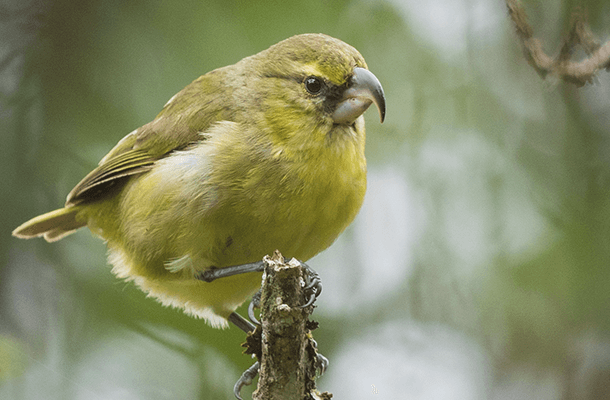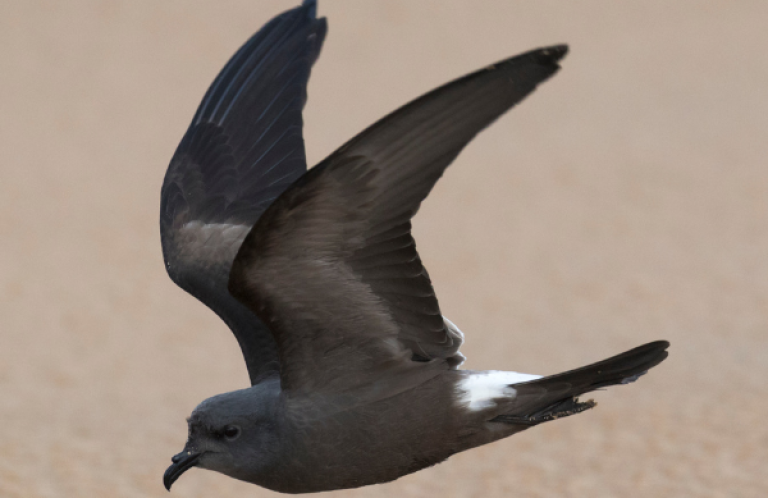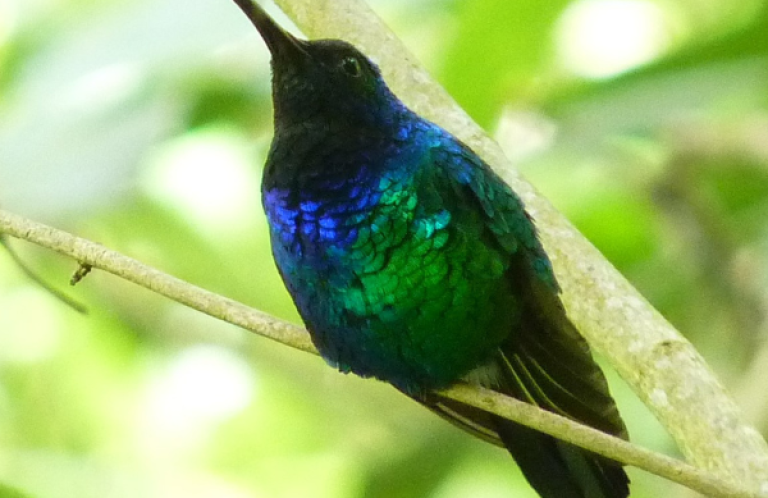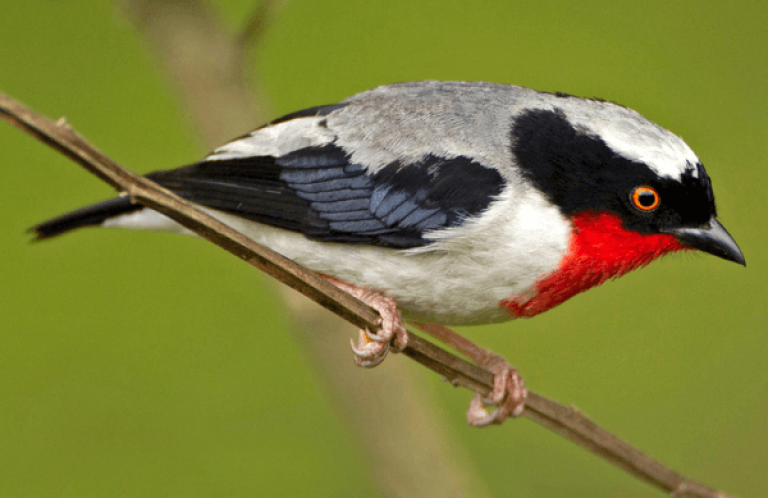“Last Chance” Report Highlights Urgent Need to Save 10 U.S. Wildlife Species Imperiled by Climate Change
Media Contact: Jordan Rutter, Director of Public Relations| jerutter@abcbirds.org | @JERutter

Its population significantly reduced due to mosquito-borne diseases, the Kiwikiu faces a high risk of extinction. Photo by Zach Pezzillo, Maui Forest Bird Recovery Project
(Washington, D.C., December 15, 2021) Hawai‘i is the bird extinction capital of the world. It's home to many bird species found nowhere else that are teetering on the edge of oblivion, including the Kiwikiu, a honeycreeper found only on Maui. A new report, Last Chance: 10 U.S. Species Already Imperiled by Climate Change, released today by the Endangered Species Coalition, American Bird Conservancy (ABC), and other partners, lists this bird as one of the top ten endangered species in the United States due to the influence of climate change and introduced mosquitoes.
“Hawaiian honeycreepers, like the Kiwikiu, are an integral part of the cultural and biological diversity of Hawai‘i — and the world. Tragically, we have already lost most of the islands' bird species, and we can and must save all those remaining,” says Chris Farmer, ABC's Hawai‘i Program Director.
Once common on the Hawaiian islands of Maui and Moloka‘i, the Kiwikiu (also known as the Maui Parrotbill) is extremely rare. Approximately 150 or fewer remain in the wild, only in a small forested region on the eastern slope of Haleakalā, Maui. This songbird was one of the first species listed as Endangered, in 1967, under the Endangered Species Preservation Act, predecessor to the Endangered Species Act.
Habitat degradation and loss — largely due to human activities and feral pigs — forced the Kiwikiu to retreat to about 19 square miles of dense, high-altitude forest by the 1990s. Fencing and pig removal have benefited these forests, but the species' biggest threat cannot be stopped by fences. That threat is the mosquito.
Hawai‘i has no native mosquito species, but a number arrived by ship starting in the 1820s. The invasive mosquitoes transmit deadly diseases, and because native Hawaiian forest birds evolved in isolation, they have no defenses. Non-native avian malaria could easily cause the extinction of Kiwikiu — as well as many other Hawaiian songbirds.
The upper slopes of the Kiwikiu's habitat were once too cool for lowland mosquitoes, but as a direct consequence of a warmer climate, mosquitoes have moved upslope. People and songbirds alike can now be bitten by a mosquito at many of the highest spots in Hawai‘i year-round.
As part of a large multi-agency partnership, ABC is helping to coordinate the design and implementation of a strategy that will disrupt the mosquitoes' breeding cycle. The objective is to release male mosquitoes containing a strain of naturally occurring Wolbachia bacteria into Hawaiian forests. The bacteria render the males unable to successfully reproduce with wild females. Repeated releases will ultimately cause the mosquito populations to crash.
“Due to advances in controlling mosquito populations for human health, we have the pieces of a solution to the forest bird conservation crisis — the pieces just have to be combined and scaled up,” says ABC's Chris Farmer. “We have the opportunity to break the extinction cycle in Hawai‘i. All that is needed are the commitments and resources necessary to implement these actions before time runs out for Kiwikiu and other Hawaiian birds.”
In 2021, global leaders have finally begun to pay more attention to the twin crises of climate change and biodiversity loss. This past summer, the United Nations (U.N.) scientific agencies on climate change and biodiversity released a report highlighting the interconnection between the two issues, warning that biodiversity loss will exacerbate climate change, and vice versa, and calling upon world leaders to address both problems urgently and concurrently. Several months later, on October 13, the U.N. Biodiversity Conference adopted the Kunming Declaration, which acknowledges that biodiversity loss and climate change are unprecedented crises that “pose an existential threat to our society, our culture, our prosperity and our planet.”
The 10 U.S. species threatened by climate change that are featured in the “Last Chance” report produced by the Endangered Species Coalition are:
- Sierra Nevada Yellow-legged Frog
- Whitebark Pine
- Monarch Butterfly
- Western Ridged Mussel
- Kiwikiu
- Mexican Long-nosed Bat
- Ka palupalu o Kanaloa (a Hawaiian flowering plant)
- Florida Key Deer
- Elkhorn Coral
- Diamondback Terrapin
Endangered Species Coalition's member groups, including ABC, nominated species for the 2021 “Last Chance” report. A committee of distinguished scientists reviewed the nominations and decided which species should be included. Please see the full report, along with photos and additional species information.
The Endangered Species Coalition produces a “Top 10” report annually, focusing on a different theme each year. Previous years' reports are available on the Coalition's website.
ABC is grateful to the National Fish and Wildlife Foundation, the H.T. Hayashi Foundation, John and Bayard Cobb, the Marisla Foundation, the Atherton Family Foundation, the Dorrance Family Foundation, the Weissman Family Foundation, and the Hawai'i Community Foundation for their support of these projects to aid Kiwikiu and address the threat of mosquitoes to this species.
###
American Bird Conservancy is a nonprofit organization dedicated to conserving wild birds and their habitats throughout the Americas. With an emphasis on achieving results and working in partnership, we take on the greatest problems facing birds today, innovating and building on rapid advancements in science to halt extinctions, protect habitats, eliminate threats, and build capacity for bird conservation. Find us on abcbirds.org, Facebook, Instagram, and Twitter (@ABCbirds).


















































